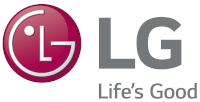SBS, LG conduct first ATSC 3.0 test transmission in Korea
Monday, September 21st, 2015
SBS, LG Conduct First Test Transmission In Korea Using ATSC 3.0 Next-Gen TV Technology
- Landmark Broadcast Delivers Pristine 4K Ultra HDTV Signals
SEOUL — Leading Korean broadcaster SBS partnered with LG Electronics for the first live over-the-air broadcast of 4K Ultra HD signals using technologies behind the emerging ATSC 3.0 next-generation television broadcast standard.
Youngsoo Park, SBS Chief Technology Officer, said this marks the first time ATSC 3.0 broadcasting technologies have been successfully tested in Korea. “This is significant achievement in realizing the feasibility of new broadcasting technology and an important first step in preparation for next year’s test transmissions here.”
SBS and LG successfully demonstrated transmission and reception of 4K UHD and HD mobile signals simultaneously in a single 6-MHz channel. LG also demonstrated capability to receive HD mobile signals in a fast-moving vehicle using the robust technology expected to be part of the ATSC 3.0 “physical layer.”
Dr. Skott Ahn, President and CTO, LG Electronics, said, “LG is leading the way in development and commercialization of ATSC 3.0. Test broadcasts like this show how we are partnering with broadcasters around the world to drive adoption next-generation broadcasting technology.”
This month’s landmark Korean broadcast comes on the heels of field tests in the United States conducted since last fall by LG Electronics, its Zenith R&D Lab, and GatesAir.
The real-world field tests in Seoul, Cleveland and Madison, Wis., represent important milestones in the collaborative effort by LG, GatesAir and Zenith to develop core technologies behind the new ATSC 3.0 Standard. Their innovations are expected to be used in the majority of the baseline Physical Layer transmission system, which is likely to become an ATSC Candidate Standard next month.
Expected to redefine TV broadcasting for decades to come, the next-generation ATSC 3.0 broadcast standard will require higher capacity to deliver 4K Ultra-High-Definition services, robust reception on mobile devices and improved spectrum efficiency. The increased payload capacity of the physical layer combined with HEVC encoding will allow broadcasters many more options when planning their broadcast service offerings.
Development of ATSC 3.0 technologies represents the latest collaboration among LG, Zenith and GatesAir, co-inventors of the transmission system behind the ATSC A/153 Mobile Digital TV Standard, adopted by the industry in 2009. Zenith invented the core transmission system at the heart of today’s ATSC A/53 Digital Television Standard, approved by the Federal Communications Commission in 1996.
Latest News
- Barb to start reporting TV-set viewing of YouTube channels
- SAT FILM selects multi-DRM from CryptoGuard
- Qvest and ARABSAT to launch OTT streaming platform
- ArabyAds & LG Ad Solutions partner with TVekstra in Turkey
- Freeview NZ satellite TV service to move to Koreasat 6
- Comscore expands YouTube CTV measurement internationally
